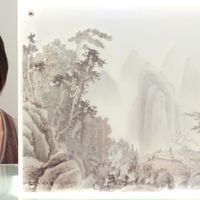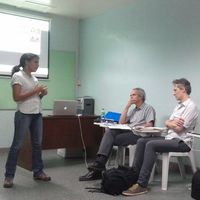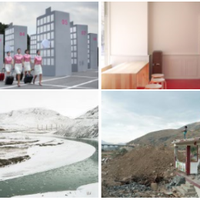Two Singaporean artists in Berlin | Song-Ming Ang | Part I
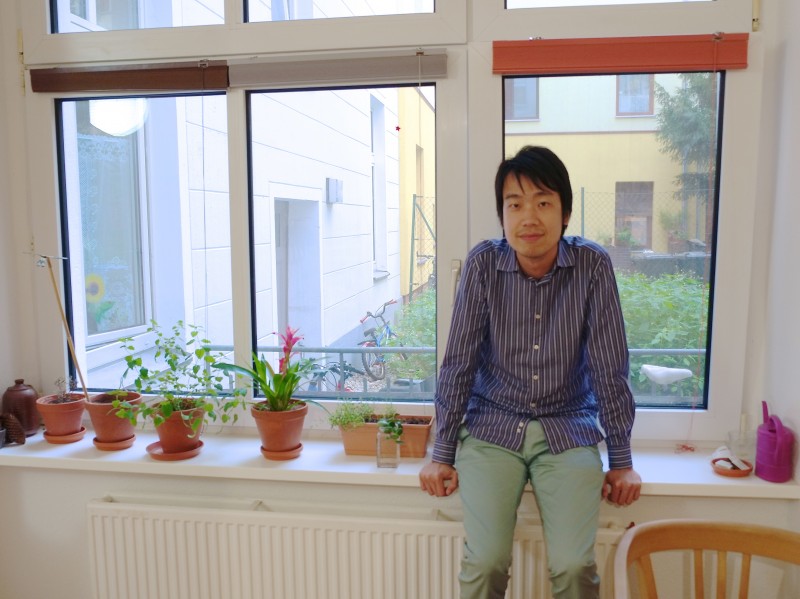 [caption id="attachment_35974" align="aligncenter" width="496"]
[caption id="attachment_35974" align="aligncenter" width="496"]In 1974, in the mid of the squatting movement in former West Berlin's Kreuzberg district, the Central Deaconess Institute and Hospital Bethanien was scheduled for demolition. In this environment, a group of artists proposed a space for arts and gave the building a new meaning. Several institutions, including the art centre Künstlerhaus Bethanien, were hosted in the former hospital.
In 2010, the building was renamed as Kunstquartier Bethanien, and Künstlerhaus Bethanien moved to a new location in a former light factory, a few blocks from the initial settlement. Until today, Künstlerhaus Bethanien is one of the reference institutions for international artist in residence programmes. Renowned artists such as Singaporean Ming Wong, who did the programme in 2007, have passed through this place gaining international recognition, as it is a reference venue for a number of curators and art practitioners worldwide.
Donna Ong did her college studies in UK. After this, she studied architecture at Bartlett Centre University College and later visual arts at Goldsmiths College. Song-Ming Ang studied English Literature at NUS (National University of Singapore) and further did a MA in Aural & Visual Cultures at Goldsmiths College. Their experiences travelling back and forth from Europe to Asia, and the international artistic career are part of this interview, but also their experience as resident artists at the prestigious art centre Künstlerhaus Bethanien. In this interview, Song-Ming Ang and Donna Ong share their experiences in Germany's capital city and how they involve their practice within the context they have been living in.
Interview with Song-Ming Ang - Part I
[caption id="attachment_35975" align="aligncenter" width="434"]
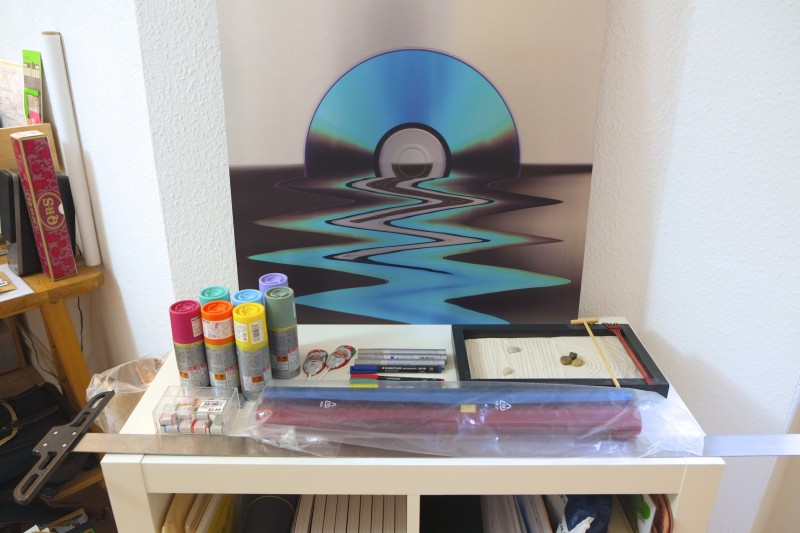 Song Ming Ang's studio in Berlin[/caption]
Song Ming Ang's studio in Berlin[/caption]Katerina Valdivia Bruch (KVB): Song-Ming, you have been living in Berlin for two years already. After your residency at Künstlerhaus Bethanien, you decided to stay. What was the reason for staying on in Berlin?
Song-Ming Ang (SMA): Primarily I want to be in a place where there is a lot of artistic activity, to learn and be challenged. Berlin also offers good value for money – the rent is cheap with respect to the quality of living. I also like Berlin because it has so much history, which is inspiring.
I grew up in Singapore, and also lived in London for a couple of years for my Masters. Actually, when you move from Singapore or London, Berlin feels very manageable. It’s not too big and not too congested. I like how it feels like a village even though it’s a city.
In Singapore I can get things done more easily, because I grew up there. I know who to look for, for example how frame my works or fabricate objects. My family is there, my friends are there. And here in Berlin I have to struggle more. I think I chose to live in Berlin partly because I wanted to make life difficult to myself.
KVB: I do the same! (laughters)
SMA: Singapore is a country, but you can't change the fact that culturally it only has the influence of a city. And, with Berlin, it is actually the other way round. It's just a city, but it has a very large influence, culturally beyond its own physical limits. There is so much artistic activity and so much being produced here.
Having said that, I still try to spend a few months every year in Singapore. This is a very exciting time for Singaporean artists. Within the last decade, we’ve got the Singapore Biennale, Gillman Barracks (a commercial gallery cluster), an art fair (Art Stage), and also the National Art Gallery opening in a couple of years. Honestly, I always feel very proud when I show in Singapore, especially a solo exhibition. Even though not all my works are about Singapore per se, it's always nice to know that what you are making as an artist is seen by people from your country. In some ways, what I am doing might have an impact on what they are thinking. And if I get feedback from them, it might have an impact on what I am making. I really appreciate this kind of connection.
On the other hand, the scene in Singapore is small and in Berlin it is much bigger. If you want to push yourself to become a better artist, you have to expose yourself to more elements. The thing is, I didn't actually study Fine Arts; I studied English Literature. For my Masters, I went to Goldsmiths College in London but it was a theoretical course in Aural and Visual Cultures.
Living in Berlin allows me to how art is presented in all the different galleries and institutions, but also to be able to talk to other artists and to visit their studios. I also get to travel easily to documenta (Kassel), Venice Biennale, Art Basel, etc. This is my art education as far as I’m concerned. My work has always been conceptual so I’m now going back towards understanding the ‘basics’, to try to develop a sensitivity towards materials and presentation.
I have also gotten very interested in craft and labour, about notions of craftmanship or expertise or being a ‘professional’, because I've been always working in a rather amateurish way, partly out of my lack of formal training, and partly due to some stubborn belief in wanting to be self-sufficient. When I was growing up, I listened to a lot of underground music and it was made by people in their parents’ garages. The labels would also operate out of some teenagers' bedrooms or something like that. It's super punk, super DIY [do it yourself ] and I grew up with this DIY attitude.
KVB: But it becomes pretty professional in the end.
SMA: Yes, my earlier works relied a lot on amateurism and participation, which are both strategies employed by avant garde artists. They allowed me to transit from making music into art, and I think they are actually very rich subjects for exploration. We need to reflect on what it means to be a professional or an amateur, and also the roles of the artist and public in art-making.
KVB: Tell me about your experience as resident at Künstlerhaus Bethanien.
SMA: I loved it very much. The National Arts Council of Singapore had an open call for the Künstlerhaus Bethanien residency and I applied, and was eventually selected. So when I came here, I was provided with both the studio and a stipend. It was really great, twelve months doing nothing other than making art. I arrived in the summer, which was fantastic. I had time to settle into the city and to see what was going on. The people at the Bethanien make an amazing team. The staff are responsive, the technicians are efficient, and things are well-coordinated. It was a conducive environment for getting things done. I also had a very nice space to exhibit in.
KVB: And the atmosphere with the other residents? How was it?
SMA: Again, for me it was a sort of going like going to art school. All the residents were friendly and it’s a really diverse group, with artists working with all kinds of media. I really benefited from the residency, because I could just go around and look at someone's stuff and see what he or she was doing. Given the fact that for almost every project, I am trying to learn how to do something, it was very helpful. As a conceptual artist, when I have an idea, I try to look for the best way to execute it. So, it could be an extremely unconventional way, like taking back a piano and putting it back together. At the moment, I am trying to learn how to play a Johann Sebastian Bach piece, the C Major Prelude from The Well Tempered Clavier. It's a very short piece and it's quite simple to play – two and a half minutes long. The thing is, after learning how to play it, I am learning how to play it backwards. In some ways, this is a work about learning and about virtuosity.
[caption id="attachment_35976" align="aligncenter" width="512"]
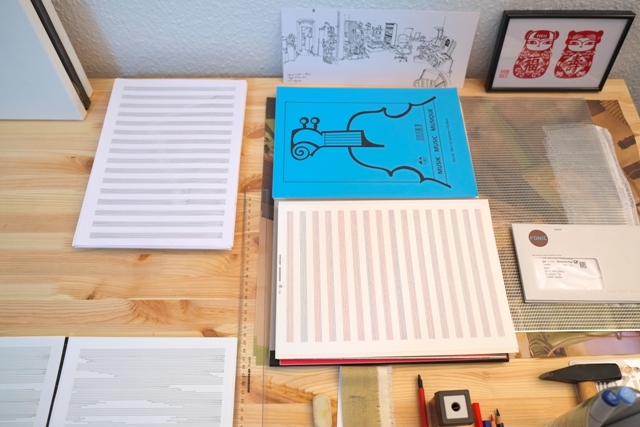 Song Ming Ang's studio in Berlin[/caption]
Song Ming Ang's studio in Berlin[/caption]KVB: How about your influences? For instance, music or visual artists that have influenced your work.
SMA: My personal art education happened in different stages. It sort of began in junior college when I got interested in literature, and went on to study Literature in university. But by the time I was in university, I discovered that what I enjoyed most wasn't reading books, but thinking about them... being critical and formulating my own responses to these texts. Actually, it hasn't changed very much in terms of what I make. When I make art it's often a response to something else that already exists, like musical paraphernalia and everyday objects. But instead of writing an essay, I use processes and materials to make something. In my work, there is very often a kind of narrative element. There is usually a simple plot or some kind of logic to it. Other than literature, I was very interested in music and when I was in university, I started making music. I also did many courses in film criticism and developed a taste for experimental and independent film.
KVB: I have a question about the local (Berlin) music community and if you are involved in it, e.g. if you go to experimental concerts, such as the ones where sound recordists play field recordings in cellars somewhere in Neukölln.
SMA: Oh, I didn't know about this! In 2008, I went to London to do my M.A., and I started to look a lot more at art. I had decided then to become an artist and was actually in London on a scholarship. So London marked a very significant change for me, because in addition to going to concerts or listening to music, I started consuming a lot more art. I just went to a lot of exhibitions. And, since I had a scholarship and some savings, I had a bit of money to travel. I went around Europe to a lot of museums, a lot of galleries. Since maybe five years ago, I would say that what I consume now is a lot more visual.
I would still say, however, that what I am really interested is in how people think. Esentially, it's always the ideas behind things that catch my attention, whether it's music, art, film or books. ‘Why did this artwork get made?’‚ ‘What is the motivation of the creator?’ ‘Why should we care?’ These are important questions for me.
KVB: What are you working on right now? Are you planning to do a show soon?
SMA: I will be participating in a group show in Singapore. There is a young artist-curator, Ho Rui An, really gifted and now on a scholarship at Goldsmiths. Rui An is organising a show at The Substation and I’m contributing with a piece. In September, I will be showing an interactive installation and a video in a contemporary art and music festival in South Tyrol, Italy, in a castle actually. And in December, I will be exhibiting some works with Singapore Tyler Print Institute at the Art Basel Miami art fair.
KVB: The fact that you live here gave you more access to other venues. Your network became bigger, I assume.
SMA: In the beginning of the interview, I was talking about living here both because Berlin has a lot going on in terms of art and that I can learn a lot from other artists… how to make works and how to present works. Of course, on the very practical level, it’s also about making contacts with curators and festival directors, because so many people pass through or live in Berlin. Definitely, there’s that kind of advantage career-wise. Since my Bethanien residency, I’ve also had several other shows not just in Berlin, but outside of it, too. Yeah, it's really nice to get my works circulated in a city like Berlin.
KVB: But you are still moving back and forth between Berlin and Singapore, right?
SMA: Yes. I was just back in Singapore in January for Art Stage, and I also had a solo exhibition last November with Future Perfect gallery. In a few days I am flying back again, because I am working on a commissioned project for the Land Transport Authority, which is in charge of the new Thomson Line on the MRT. There are 20 stations on this line and they’ve commissioned 20 Singaporean artists to do the artwork for each station. I am going back this time to meet with the architects and work on the details of the installation.
KVB: There is a similar project managed by NGBK, to install artworks from local artists in the U-Bahn (underground) stations in Berlin.
SMA: Yes, it is very interesting. I've seen some of the new works installed. They are very good.
KVB: The difference here is that it is an art association making an open call. In your case, it's coming from the government, which is a bit different. But, it's great, it's really good!
SMA: Yes, I think this is one key difference between Berlin and Singapore. In Singapore, the government has done a lot to stimulate the production of art, and in Berlin things are more dynamic, with more players that are driving the scene at the grassroots level, in a more organic way. It’s just that these two cities have such different histories, so things work in a different way. I feel privileged to be exposed to, and to work with, both systems.
Click here to see Song-Ming Ang's website: http://www.circadiansongs.com/
Other links:
Photos: courtesy the artist

